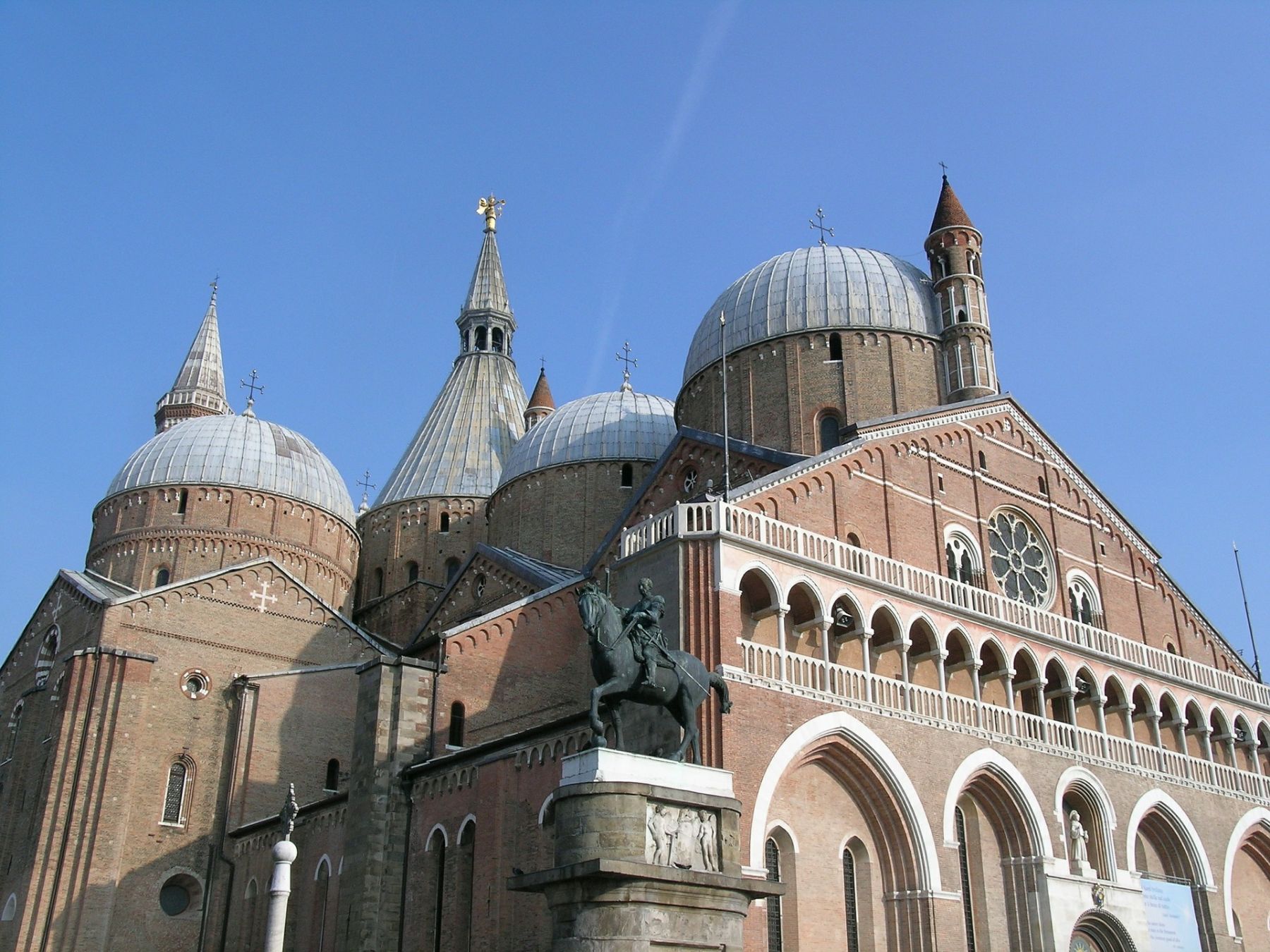A Venetian nursery rhyme defines the people of Padua as “great doctors”. It is probably due to the fact that one of the oldest universities is found here. But the city of Padua is so much more than intellectual. Let’s get to know this city on foot with this guide to Padua in a single day.
Padua in a Single Day
Scrovegni Chapel
Our tour of Padua starts from the magnificent Scrovegni Chapel. The spearhead of this small chapel, which from the outside might seem anonymous, is located inside. It houses Giotto‘s famous cycle of frescoes representing three themes chosen by the Tuscan master. In addition to the priceless works of Giotto, the Scrovegni Chapel also houses three marble statues on the altar made by Giovanni Pisano.
The chapel is located in the middle of the ruins of the ancient Arena of Padua, where excavations are still ongoing. It is accessed through the Eremitani Civic Museums of Padua in Piazza Eremitani. The ticket includes a visit to the chapel and a visit to the museums.
Eremitani Civic Museums
The museums are divided into the Archaeological Museum and the Museum of Medieval and Modern Art. The 19 rooms retrace Paduan history and archeology and hold important testimonies.
In addition, there is also a multimedia room here entirely dedicated to Giotto’s frescoes in the Scrovegni Chapel, which immerses visitors in the artistic journey and historical context of the Tuscan painter.
Bo Palace
Bo Palace or Palazzo del Bo is definitely a highlight on your visit to Padua. It’s the historic seat of the University of Padua and today it is home to the Rectorate, the school of Law and the most primitive anatomical theater in the world.
Piazza delle Erbe, Piazza della Frutta, and Palazzo della Ragione
Continuing our visit to Padua, near the prestigious university site we find another of the major attractions of the city: Piazza delle Erbe. Together with Piazza della Frutta, they were the commercial heart of Padua. It still hosts one of the largest markets in Italy. The two squares are adjacent but separated from the Palazzo della Ragione which initially had a task of maintaining order in the markets as well as being the seat of justice. Open to the public is a magnificent room- 81 m long and 27 m wide- where you can admire 127 m of frescoes and a wooden horse. The frescoes were commissioned to Giotto, but were destroyed following a fire in 1420 and then restored by Nicolò Miretto. From the portico of Palazzo della Ragione, you can admire a beautiful panorama of Piazza delle Erbe.
Santa Maria Assunta Cathedral
The Cathedral of Padua stands out in the middle of the episcopal palace and the baptistery. The mannerist Baroque style of this church makes it very eye-catching, also because it has never been completed. Its Baptistery is somewhat of an unexpected beauty where you can admire beautiful frescoes that reach the dome.
St. Anthony’s Basilica
Commonly known to the locals as “la Basilica del Santo”, this church is one of the greatest masterpieces in the world. It is also recognized as an international sanctuary making it one of the most important and famous places of worship of the Christian religion. At first look, you’ll immediately notice a certain resemblance to St. Mark’s in Venice.

Prato della Valle
This square represents the symbol of Padua. Prato della Valle is well known internationally because it is the second-largest square in Europe (the first is Moscow’s Red Square). Inspired by the Venetian tradition, this charming and evocative square is intersected by four avenues that join together in the center. Small, graceful bridges crisscross the surrounding canal. 78 statues representing famous people from the past adorn the canal. Originally, there should have been a total of 88 statues. In the center, we find a green island called Isola Memmia in honor of the podestà.
Botanical Garden
We conclude our walk through the streets of Padua with another of the flagships of this city: the Botanical Garden. Part of the UNESCO World Heritage Sites, the garden stands on the land of the Benedictine monks where they cultivated medicinal plants. At the center of the 22,000 square meters of garden, we find a swimming pool dedicated to aquatic plants. In total, around 3,500 species of plants can be found.
What to Eat in Padua
It’s virtually impossible to have a bad meal in Padua. The typical dishes of the Venetian tradition are innumerable and delicious. Do not miss bigoli, a long, fresh pasta created right here in Padua, topped with various sauces. The most common being sardines and capers. Another typical Venetian dish is tagliatelle with radicchio and pancetta or paccheri pasta with duck. Boiled meat is a common second course and for dessert, try the pazientina cake.




